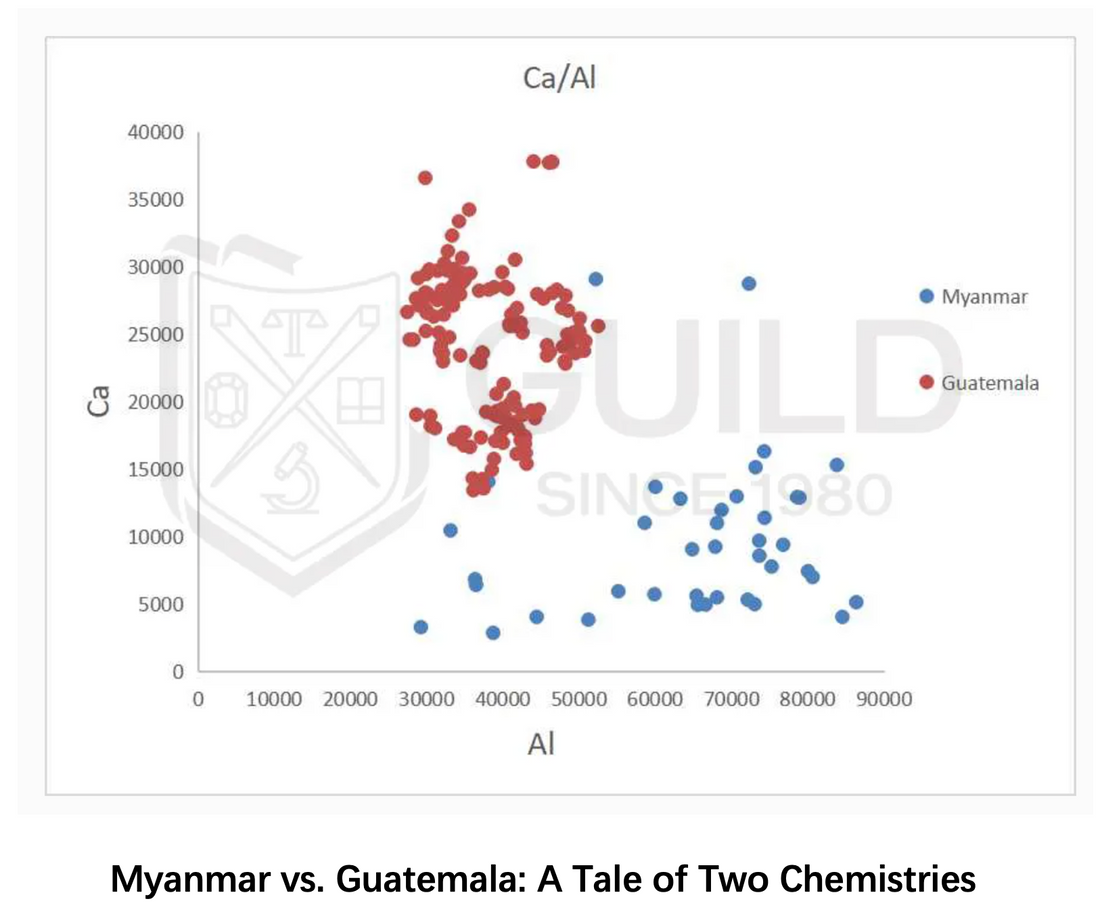
Trace Element Fingerprinting: XRF Analysis and Origin Tracing
While color and texture may captivate the eye, it’s the invisible chemical signature that tells the deepest story of a jadeite’s origin. Through X-Ray Fluorescence (XRF) analysis, gemological laboratories can detect trace elements within jadeite that reflect both its geological history and geographic source.
💡 What Is XRF Analysis?
XRF, or X-Ray Fluorescence Spectroscopy, is a non-destructive analytical technique used to determine the elemental composition of materials. When jadeite is bombarded with X-rays, its atoms emit secondary (fluorescent) X-rays at characteristic energies, revealing which elements are present and in what relative abundance.
In gem labs, XRF is especially effective for detecting elements such as:
- Aluminum (Al)
- Calcium (Ca)
- Iron (Fe)
- Chromium (Cr)
- Titanium (Ti)
- Nickel (Ni)
These elements vary subtly depending on where the jadeite was formed, creating a unique “elemental fingerprint.”
🧪 Myanmar vs. Guatemala: A Tale of Two Chemistries
One of the clearest distinctions revealed by XRF is the Al:Ca ratio:
- Myanmar jadeite tends to have very high aluminum content, sometimes exceeding 86,000 ppm, and low calcium levels. This reflects its purer jadeite composition and higher crystallinity.
- Guatemalan jadeite, on the other hand, often shows elevated calcium content (up to 37,000 ppm) and comparatively lower Al. This indicates the presence of omphacite or mixed pyroxene phases, more common in Central American deposits.
Other trace elements like Fe, Ti, and Cr also show variation between origins, further strengthening the identification framework.
🧠 Why Trace Elements Matter
Elemental fingerprinting provides a scientific foundation for origin certification, crucial for both buyers and sellers in the jadeite market. It allows gemological labs to:
- Accurately differentiate between Burmese and Guatemalan jadeite
- Support provenance claims for high-value pieces
- Offer objective data for grading and pricing
Combined with spectroscopic and microscopic analysis, XRF is part of a comprehensive gem ID toolkit that enhances transparency and trust in the jade industry.
In our final post, we’ll show how all these techniques come together in a complete origin report, issued by certified gem laboratories.
